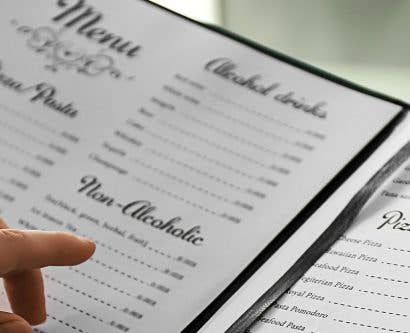Definitive Guide to Sole Trader Tax
If you plan to work as a sole trader and run your business long-term, you need to be knowledgeable about tax requirements. A firm understanding of sole trader tax supports the success and security of your business.
You should also be aware of what differentiates sole traders from limited companies, in case your business plan is better-suited to a different structure. By deciding early on what direction to take your business, you can ensure that it gets the best mileage possible and you can properly forecast the flow of your finances.
This article is split into the following sections:
- Difference Between Sole Trader and Limited Company
- Which is Better: Sole Trader or Limited Company?
- Do Sole Traders Have to Register With Companies House?
- Income Tax for Sole Traders
- Sole Trader National Insurance Contributions (NIC)
Use the links above to navigate to a certain section of the article.
Difference Between Sole Trader and Limited Company
The main separating factors between sole traders and limited companies is how people are positioned in the business from a legal standpoint and how the business is taxed.
Limited companies are their own legal identity and are considered separate from shareholders and directors, who have limited liability (individuals are not easily held accountable for the actions of the company). A sole trader on the other hand has little separation from their business. The sole trader is legally the owner and is personally responsible for debts and liabilities.
Sole Trader Tax
- A sole trader must pay tax on business profits (minus expenses).
- They are currently required to pay Class 2 and 4 National Insurance and Income Tax on all taxable business profits.
- A sole trader can withdraw cash from the business without tax effect.
- If a sole trader has a business bank account that is separate from their personal one, they can claim tax relief on interest and charges.
- When a sole trader sells assets or the business, any monetary gain is taxed.
- Tax relief is given to sole traders for expenses incurred wholly and exclusively for the business.
Limited Company Tax
- A limited company must pay corporation tax on all its taxable profits.
- Directors of a limited company are taxed on earnings via PAYE, and are also required to complete tax returns.
- Limited company shareholders must pay income tax on dividends and certain types of distribution made by the company.
- Income withdrawn from the limited company is taxed as a dividend if it is a distribution.
- If a limited company sells the business or any assets, shareholders are subject to a double tax charge, while the company must pay corporation tax on any profits.
- Tax relief is given to limited companies for expenses incurred wholly and exclusively for the business.
- Private expenses may be treated as earnings if incurred by directors or as distributions if incurred by a shareholder.
Other Differences Include:
- How pension plans work – there are usually more options in limited companies.
- Insolvency – sole traders have full responsibility for debts whereas shareholders of a limited company do not.
- Accounts required – there are no requirements for sole traders preparing accounts, whereas limited companies have to meet specified legal requirements.
- How the business is sold – tax on the earnings from selling a business differs between sole trader and limited company.
- How people are paid – sole traders can withdraw profits with fewer tax requirements than a limited company.
- Working from home – sole traders can claim a deduction on mortgage interest, while people working from home for a limited company can claim a certain amount per week for some expenses.
- How company cars, fuel, computers, and mobiles are purchased – there are different tax requirements for sole traders and limited companies when purchasing and using these types of assets.
- Tax-free benefits and incentives – these are not applicable to sole traders, whereas limited companies can provide various benefits and employment incentives.
Need a Course?
Our Business Compliance Courses cover a wide range of the essential courses you need to make your business a success – whether you’re self-employed or part of a limited company.
Which is Better: Sole Trader or Limited Company?
That depends entirely on the type of business you plan to run.
Forming a limited company can be more viable than setting up as a sole trader if your business plan is multifaceted. This is because a limited company runs on a larger scale in terms of people. There is also more security as you are unlikely to be held liable for legal disputes.
However, a limited company has to jump through more hoops than a sole trader to keep things running. Plus, a director or shareholder in a limited company may have divided control over the way the business is run and how finances are handled as a whole, as opposed to a sole trader who is fully in charge.

Do Sole Traders Have to Register With Companies House?
A sole trader is not required to register at Companies House. Only those setting up a limited company or Limited Liability Partnership have to register. However, if you want to work as a sole trader, you need to create an online account via the Government Gateway on the HMRC website. Here you can gain access to Self Assessment tax forms.
It is very straightforward to register as a sole trader.
To register, you need to provide HMRC with the following details:
- Your name.
- A home address.
- National Insurance number.
- Contact details – i.e. phone number and email address.
- A name and address for your business, which can be your own name and address if you wish.
- Contact details for the business address.
- Purpose and main activities of your business.
- Start date of your business.
After submitting your details, HMRC will send you a letter containing your 10-digit activation code (Unique Taxpayer Reference) and information about your responsibilities as a sole trader. They should also automatically send you a Self Assessment tax return notice following the end of the tax year.
Sole traders can register at any time, up until the 5th of October in the business’ second tax year.
Example
If you begin working as a sole trader in March 2020, you have until October 2020, because these months are in two separate tax years. Whereas, if you begin working in August 2020, you have until October 2021.
Also, be aware that you may need to obtain certain licences or permits, depending on the type of work you intend to carry out (such as childminding or street trading).
Income Tax for Sole Traders
Knowing the different rates of Income Tax and NIC helps you to manage your finances efficiently and pay the correct amount of money to HMRC. You can track your income and balance your earnings to fit within suitable brackets, for all payments required by HMRC, and therefore maximise the amount you retain.
Income Tax for sole traders is calculated based on their self-employment income (minus disallowable expenses). Every UK resident is entitled to a personal tax-free allowance before their income is taxed, so you’ll need to deduct it from your overall income to determine what your taxable income is.
The current Income Tax rates for sole traders are:
- Personal allowance: the first £12,500 = tax-free (unless income is above 100,000, after which you lose £1 of personal allowance for every £2 earned).
- Basic rate tax: £1-£37,500 (after taking off personal allowance) = 20% tax
- Higher rate tax: taxable income over £37,500 = 40% tax.
- Additional rate tax: taxable income over £150,000 = 45% tax.
Example
Your gross income is £41,000. The first £12,500 is tax-free, meaning only £28,500 (£41,000 – £12,500) is taxable. It is within the basic rate tax bracket, so you must pay 20% tax. Whereas, if your income is £51,000, the taxable income is 38,500, which is above the basic rate tax and so you have to pay 40% tax.
Remember that, when taxable income exceeds £100,000, the personal allowance rate reduces by £1 for every £2 of income above this level. You also do not get a personal allowance on taxable income over £125,000.
The deadline to file a tax return, which must detail your income from all sources, is the 31st of January every year.
Sole Trader National Insurance Contributions (NIC)
Sole traders are currently required to pay two forms of National Insurance Contributions: Class 2 and Class 4. During your Self Assessment, for Class 4 you must calculate the amount you owe based on your profit, whereas for Class 2 you must pay an amount based on a fixed rate charge.
Class 4 NIC:
- The first £9,500 = 0%.
- Between £9,501 and £50,000 = 9%
- Income above £50,000 = 2%.
Class 2 NIC:
- A fixed rate charge of £3.05 per week.
- When a business earns below £6,475 per annum, they can claim exemption due to being below the small income threshold.

Further Resources:
- Business Essentials Courses
- How Online Training Can Benefit Your Business
- Bookkeeping and Accounting Glossary of Terms












